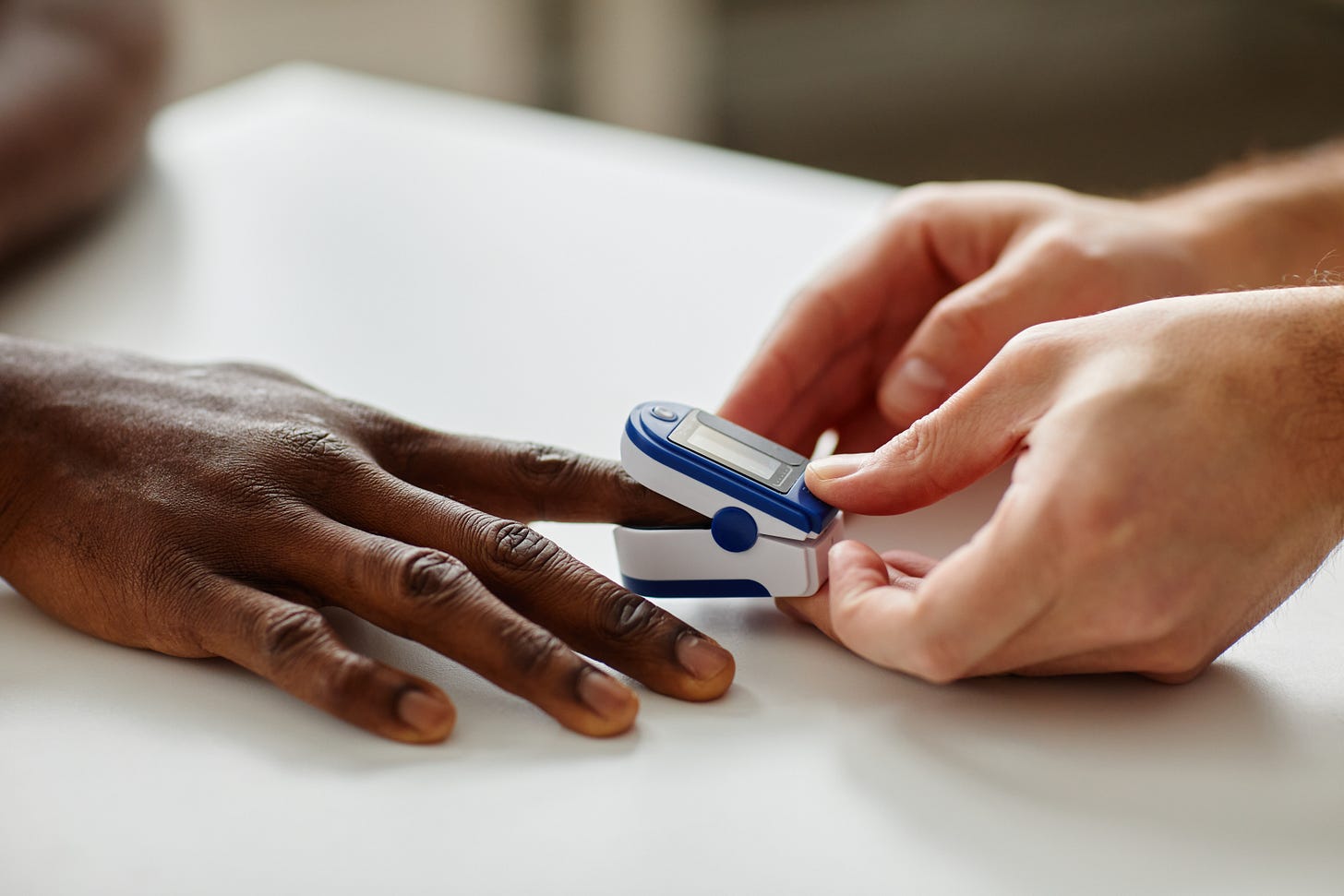The Latest in Critical Care, 9/3/23 (Issue #13)
Pulse oximeters overestimated oxygen saturation in darker-skinned patients with Covid, causing treatment delays.
It was a bit of a national and professional embarrassment when after many decades of ubiquitous use of pulse oximetry, calibrated on patients with light skin, someone finally thought to validate it with arterial blood gases in darker-skinned …
Keep reading with a 7-day free trial
Subscribe to PulmCCM to keep reading this post and get 7 days of free access to the full post archives.



